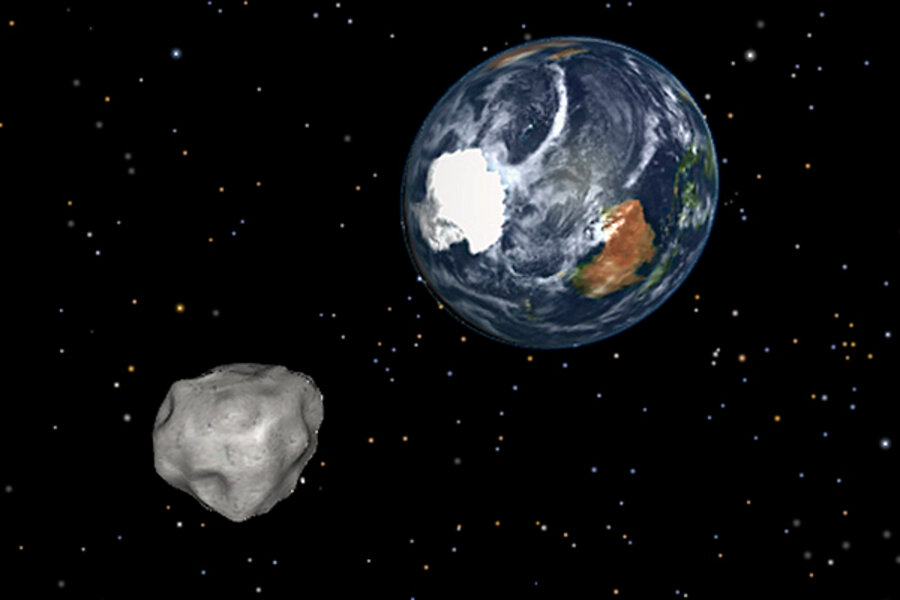NEOs are asteroids and comets whose orbits bring them close to Earth. They range in size from about three feet to several miles across. The asteroid or comet that punched a 110-mile-wide crater in the Yucatán Peninsula 65 million years ago, doing in the dinosaurs, has been estimated at six miles across.

JPL-Caltech/NASA/AP
This image shows a simulation of asteroid 2012 DA14 approaching from the south as it passes through the Earth-moon system, last Friday.





